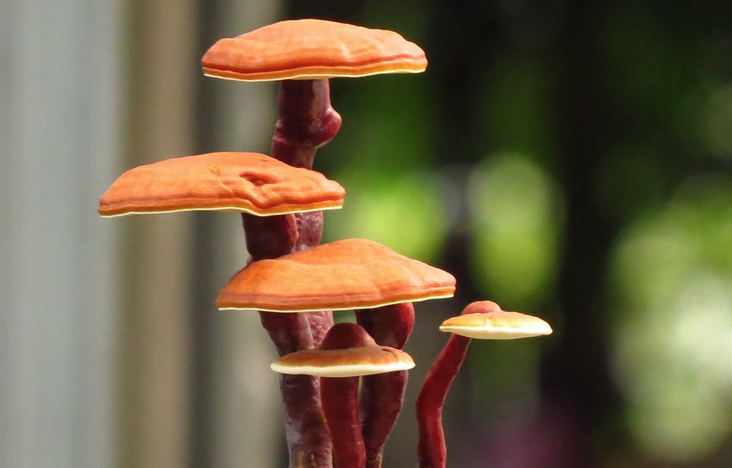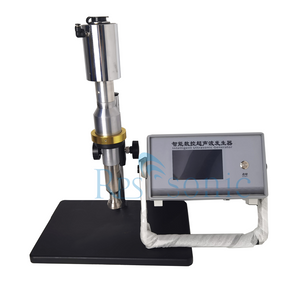How to use ultrasonic to assist in the extraction of mushroom Agaricus bisporus polysaccharides?
Technical field
The present invention belongs to the technical field of extracting relevant components from the genus Agaricus, and specifically relates to a method for extracting Agaricus bisporus polysaccharide.
Background technology
Agaricus bisporus, also known as mushroom, foreign mushroom, white mushroom, etc. in Chinese, is often called common cultivated mushroom or button mushroom abroad. Agaricus bisporus belongs to Eumycota, Basidiomycotina, Hymenomycetes in taxonomy. Chinese medicine believes that Agaricus bisporus is cool in nature, sweet in taste, and non-toxic. Mushrooms enter the intestines, stomach, and lungs, and have the effects of appetizing, regulating qi, resolving phlegm, pleasing the mind, detoxifying, clearing rashes, stopping vomiting, stopping diarrhea, digesting food, clearing the mind, and calming the liver yang. It is mainly used to treat fatigue and qi deficiency in the middle and late stages of fever, dry mouth, poor appetite, gastrointestinal inhibition, vomiting, diarrhea, cough with phlegm, and poor rash in children. Modern research shows that Agaricus bisporus is rich in protein, polysaccharides, vitamins, nutrients and fertilizers. It is not only nutritious and delicious, but also has anti-tumor, anti-aging, antioxidant and immune regulation functions. Agaricus bisporus polysaccharides have physiological effects such as antibacterial, antioxidant, immune enhancement and insulin inhibition. The development and utilization of Agaricus bisporus polysaccharides and the study of their nutritional and health functions will be the hot spots for future research on Agaricus bisporus.
In order to solve the problems of strong acid and strong alkali in the existing technology that easily destroy the structure of polysaccharides, the extraction of high efficiency steps, complex process and low purity of polysaccharides; the purpose of the present invention is to provide a method for probe-assisted extraction of Agaricus bisporus polysaccharides, that is, to provide a new method for extracting Agaricus bisporus polysaccharides that is efficient, energy-saving and environmentally friendly.

The technical scheme for achieving the purpose of the present invention is as follows:
A method for primer-assisted Agaricus bisporus polysaccharide comprises the following steps:
(1) Take small pieces of fresh Agaricus bisporus solids, crush at 60°C to obtain crushed material;
(2) Add deionized water to the crushed material of step (1) in a probe reaction tank according to a water-to-material ratio of 10-50 mL/g for hot water extraction, the extraction temperature is 20-80°C, the time is 10-50 min, and the ultrasonic power is 80-200w to obtain an extract;
(3) Centrifuge the extract of step (2) and take the supernatant, the centrifugation conditions are: 5000rpm, 15min; the precipitate is extracted again by the same method, centrifuged, and the supernatant is taken, and the two supernatants are combined;
(4) Concentrate the supernatant of step (3) at a temperature of 50°C to 1/10 of the original volume to obtain a concentrated solution; add 3 times the volume of anhydrous ethanol to the concentrated solution for precipitation for 15-2 0h, centrifuge at 5000rpm for 15min, and take out the precipitate;
(5) The precipitate of step (4) is deproteinized by the Sevag method.
At a concentration of 5mg/mL, the precipitate of step (4) is dissolved by ions, and then 1/5 of the volume of chloroform and n-butanol mixture is added, and the ratio of chloroform to n-butanol is 5:1; shake on a shaker at 170rpm for 20-30min, stand for 20-30min, and layer to form a lower organic solvent-protein phase; the supernatant is repeatedly deproteinized 4-6 times by the same method, and there is no protein layer stability between the upper and lower liquid surfaces of the solution, and the supernatant is collected;
(6) The supernatant of step (5) is concentrated to 1/5 of the original volume at a temperature of 50℃ to obtain a concentrated solution; 9 times the volume of anhydrous ethanol is added to the concentrated solution for precipitation for 15-20h, centrifuge at 5000rpm for 15min, and the precipitate is taken;
(7) The precipitate of step (6) is deproteinized by a macroporous resin Method for pigment removal
Add ionized aqueous solution to the precipitate of step (6) at a concentration of 2mg/mL, add 1g of AB-8 macroporous resin to each 5mL of the solution, shake on a shaker at 170rpm for 12h, let stand to remove the macroporous resin adsorbed with pigment, and collect the supernatant;
(8) Concentrate the supernatant of step (7) at a temperature of 50℃, and vacuum dry at a temperature of 60℃ to obtain Agaricus bisporus polysaccharide extract;
This Agaricus bisporus polysaccharide extract is a light brown powder, in which the polysaccharide content ranges from 52.89% to 75.48%.
The optimized conditions of the above step (2) are a water-to-material ratio of 30mL/g, an extraction temperature of 65℃, an extraction time of 40min, and an ultrasonic power of 170w.
Compared with the process disclosed in Chinese Patent No. 200810222270.1, the process of the present invention has the following advantages:
① The pH value of the application method during extraction is 9, and the pH value during decolorization is 4. Such strong acid and strong alkali operation can easily destroy the structure of polysaccharides; the pH value of the method of the present invention during extraction is near neutral, and the conditions are mild and will not destroy the structure of polysaccharides.
② The method does not perform deproteinization during the extraction process, and the purity of polysaccharides in the extract is not high (not guaranteed); the extraction process of this method uses the Sevag method for deproteinization, and the polysaccharides in the extract are just the opposite, which is 7. The process of the present invention has the following advantages compared with the process disclosed in Chinese Patent Application No. 200910151176.6: The method has more complex enzyme treatment, microwave treatment and membrane filtration processes than the extraction steps of this method, and the method has more oxidant process than the extraction method. In addition, both of the two patented methods use fresh Agaricus bisporus seeds as the extraction raw material, which is easily affected by the production season; the method uses dried and crushed Agaricus bisporus seeds as the effective limited extraction raw material, which can overcome the problem of using fresh raw materials being affected by the production season.
The Agaricus bisporus polysaccharide extract is a light cobalt powder, wherein the polysaccharide content ranges from 52.89% to 75.48%.
 English
English













